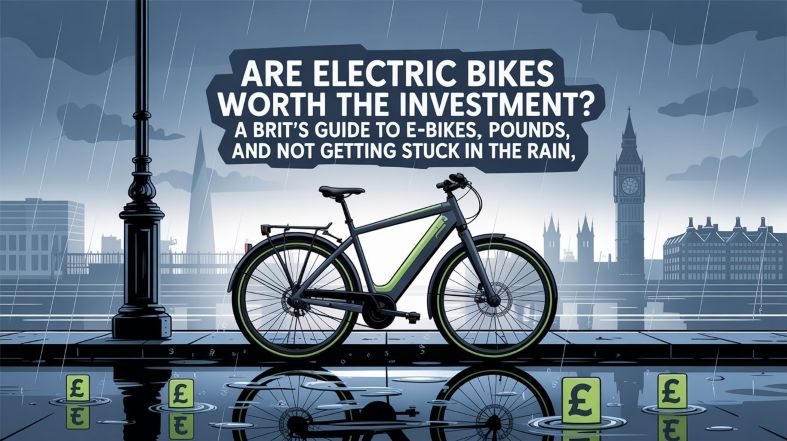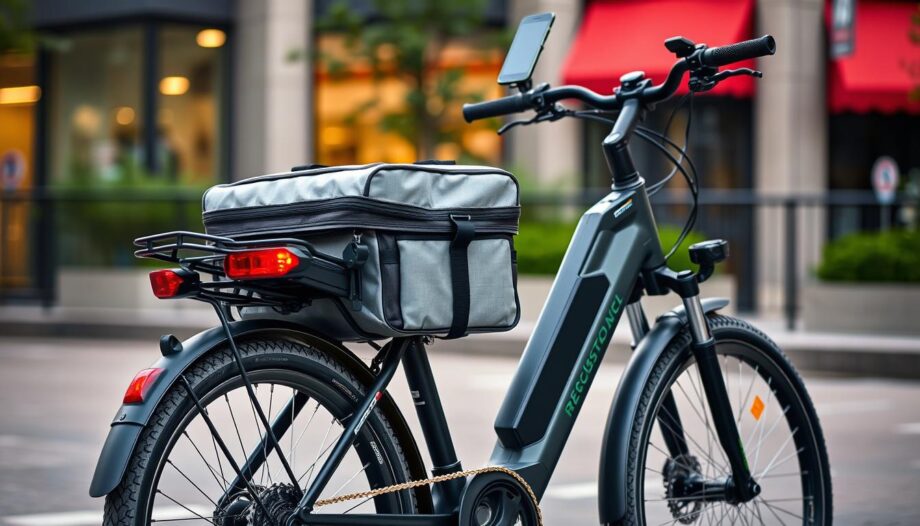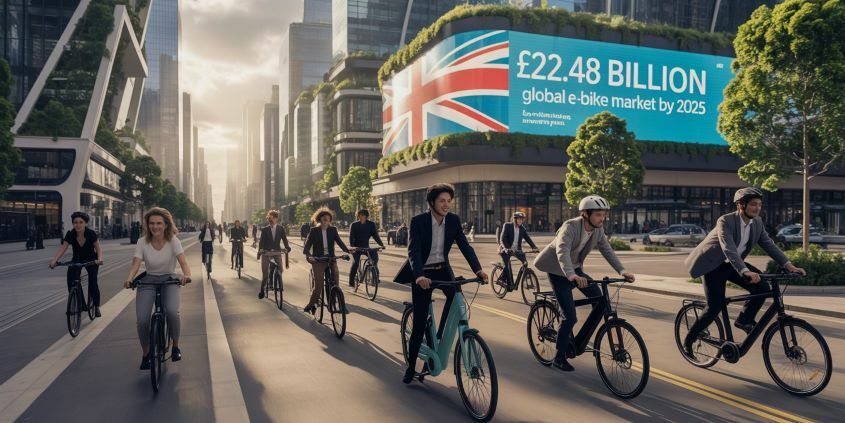Electric bikes have taken the world by storm, offering an exciting alternative to traditional cycling while making our commute a bit easier and more fun. With their blend of electric power and pedal assistance, these bikes don’t just help us avoid sweaty rides; they’re also paving the way for a greener future. However, diving into the e-bike market can feel overwhelming, especially when trying to understand the price differences and what they mean for your riding experience. In this article, the electric bike cost largely depends on features like motor power and frame design, but one of the biggest factors is the electric bike battery, as higher-capacity batteries significantly increase the price.
The average cost of electric bikes in 2024 typically ranges from £900 to £4,000, depending on factors such as the brand, specifications, and features. This reflects a slight increase in prices due to tariffs on imported components and rising demand in the market. Which has now been removed!
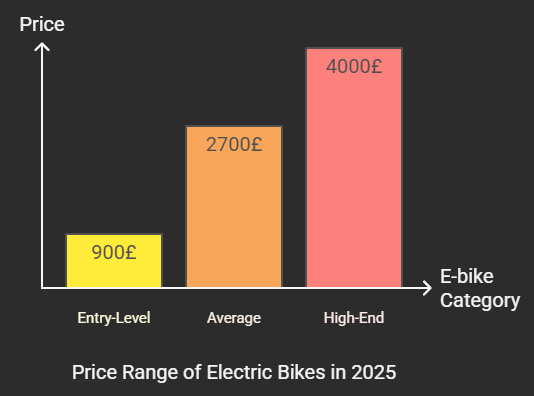
Average Cost of Electric Bikes in 2025
The landscape of electric biking is shaping up to be quite dynamic in 2025, with the average cost of e-bikes hovering around £2,700. However, this is just the midpoint; prices can vary significantly from £900 for entry-level models up to £4,000 or more for high-end machines.
There is good news, though, for 2025, The UK has now removed tariffs, or what would people call import duty on electric bikes, on February 6th of 2025, which is good news for us all as we could see prices fall for the first time in 4 years since Brexit ruined the market.
It’s crucial for us to understand how the features and specifications correlate with this price range. For example, an entry-level e-bike might offer basic performance capabilities, while a premium model could include advanced technology such as high-capacity batteries or integrated smart technology.
When considering our options, it helps to think about what we specifically need from our electric bike. Are we looking for a commute-friendly model that allows easy navigation through both urban environments and rural trails? Or do we want something designed for leisurely rides on weekends?
Individual needs will dictate which price tier makes the most sense. Generally speaking, entry-level models start at around £1,000 and appeal to casual riders or those who see biking as an occasional activity rather than a lifestyle.
Navigating through these price points means finding balance between quality and budget.
As we get closer to those mid-range options—like the reputable Macfox X1S at around £800—we usually encounter bikes that offer solid performance without breaking the bank. Mid-range e-bikes tend to provide good durability and functionality, making them great choices for regular users who want reliability without any extravagant frills.
Importantly, experts predict that the popularity of e-bikes will keep growing due to factors like rising fuel prices and environmental concerns. As more of us consider sustainable transportation options, demand should mean we’re likely to see a broader selection in that middle ground between affordability and luxury.
Let’s not forget that all mentioned prices are before sales tax, meaning our final costs may vary based on local regulations. Therefore, we should always connect with local retailers or look into trusted market sources before making a decision.
With this understanding of average costs and their influencing factors, it’s clear that being informed can lead to better purchasing decisions.
Armed with this knowledge on pricing, let’s explore how different brands compare as we assess various options available in the market today.
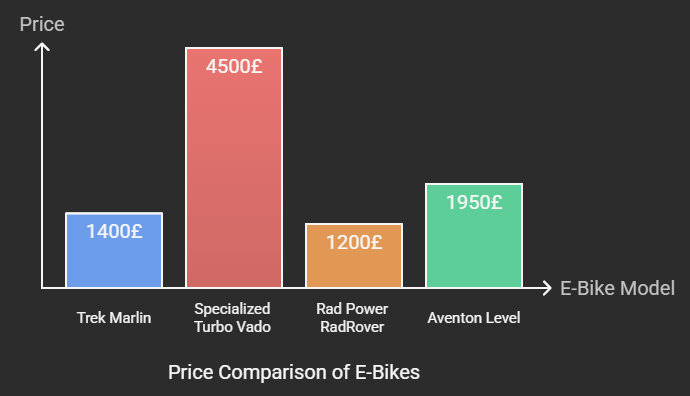
Check out the potential savings you can make with an e-bike, with our cost calculator.
High-End Models vs. Budget Options
High-end electric bikes often offer a wealth of features that cater to serious riders looking for enhanced performance and durability. For instance, the Specialized Turbo Levo, priced at around £5,500, boasts a powerful motor and a battery that can handle longer rides without faltering. This model seamlessly integrates smart technology, allowing us to connect our rides to apps for tracking performance metrics, which can be invaluable if we’re serious about cycling.
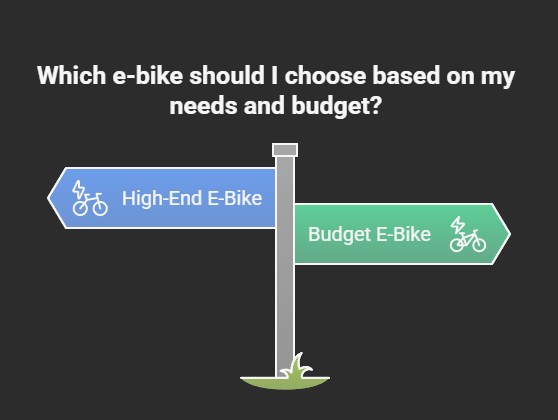
Beyond the specifications, high-end models like this typically come backed by better warranties and customer support. This means, in the unlikely event something goes wrong, we won’t face long delays or inadequate assistance from manufacturers. Investing in these premium bikes can provide peace of mind and significantly enhance our riding experience.
On the other end of the spectrum are budget options like the Ancheer e-bike, which retails for approximately £900. While these bikes may lack sophisticated technology and powerful motors, they serve as reliable options for casual riders who don’t require high performance. They’re ideal for those looking to enjoy leisurely rides without the hefty price tag.
However, we need to acknowledge that budget options often come with their limitations. The construction materials tend to be less robust, leading to potential wear and tear issues sooner than expected. Regular maintenance could become a necessity more frequently compared to their high-end counterparts.
Cost-Benefit Analysis
When choosing a high-end model or a budget bike, we must consider our riding habits and expectations. If we’re likely to ride daily over varied terrains, investing in a high-end bike could save money on repairs and replacements down the line. In contrast, if our electric bike is primarily meant for weekend leisure rides around the local neighbourhood, a budget-friendly option might suffice.
Understanding the cost-benefit ratio is essential for making an informed decision that aligns with our personal cycling needs and financial situation. Whether we lean towards splurging on advanced technology or saving with adequate performance models will significantly shape our riding adventures today and into the future.
As we explore these various pricing tiers further, let’s investigate some key elements influencing the costs associated with e-bikes today.
Key Factors Affecting E-Bike Prices
The cost of an electric bike can feel overwhelming at first glance, but understanding what drives these prices makes it all more transparent. One major aspect is the components and build quality. Take the frame, for example—an entry-level bike may feature a steel frame that’s sturdy yet heavy, while higher-end models often utilize lightweight aluminium or even cutting-edge carbon fibre materials. These choices in materials not only affect the cycling experience but also contribute significantly to durability and performance. A well-constructed e-bike stands up to daily use and the occasional bump on the road, making it a worthy investment.
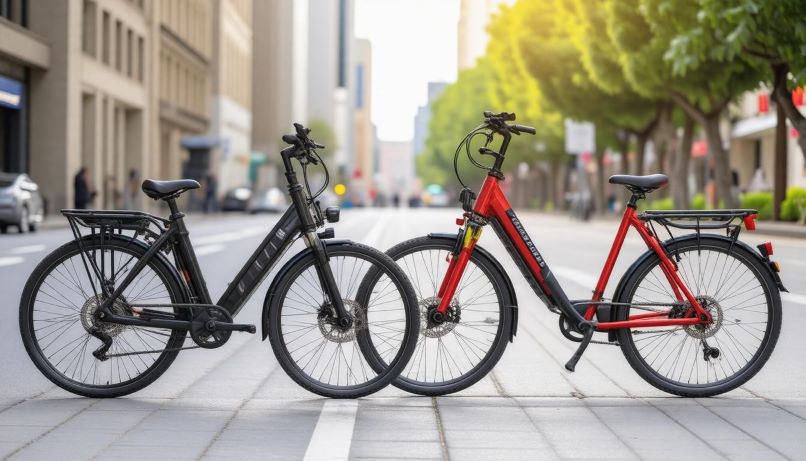
Components and Build Quality
When we examine components, we discover that everything from brakes to tyres plays a role in determining the price. E-bikes equipped with hydraulic disc brakes provide better stopping power under various weather conditions compared to mechanical disc or rim brakes. Similarly, investing in quality tyres can enhance ride comfort and safety, particularly when tackling different terrains. It’s fascinating how manufacturers strike a balance between cost and performance; thus, bicycles with superior parts naturally carry a higher price tag.
But let’s not forget one of the most significant contributors to e-bike pricing: battery capacity and motor power.
Battery Capacity and Motor Power
Think about it: the energy source of an e-bike defines not only how far we can travel but also how quickly we can get there. As mentioned earlier, e-bikes with larger battery capacities, like 48V compared to 36V, naturally command higher prices. This is because they offer extended distances per charge, allowing us to explore more without worrying about running out of juice halfway.
Additionally, motor power directly correlates with performance. An electric bike featuring a robust 500W motor usually costs more than one equipped with a standard 250W motor since it provides greater acceleration and hill-climbing ability; perfect for urban commuters navigating steep inclines or those who love weekend adventures off-road.
In practical terms, our choice between a medium-powered bicycle versus a high-powered model ultimately hinges on our intended usage, whether that’s leisurely rides on flat pathways or challenging trails that require more strength.
With these insights into components and specifications shaping e-bike prices, it’s essential for us to weigh these aspects carefully against our personal riding needs and budget when selecting our next bike. As we explore further, we’ll dive into vital details regarding capabilities, including efficiency, endurance, and key features to consider in your new ride.
Performance, Battery Life, and Features
When evaluating e-bikes, performance is a key factor that shapes our overall riding experience. The Macfox X1S particularly shines here with a top speed reaching anywhere from 20 to 28 mph, making it an excellent choice for city commuting. This speed isn’t just about getting from point A to point B; it provides us with the ability to navigate urban landscapes efficiently while still enjoying the ride.
We can zip around morning traffic or make it to appointments on time without the hassle often faced by traditional cyclists. Acceleration also plays a vital role in how we feel as riders, especially when merging into fast-moving traffic. A responsive motor allows for quick takeoffs with minimal lag, enhancing both safety and enjoyment on the road.
Now, let’s turn our attention to battery life, which is equally crucial for an enjoyable e-biking experience.
Battery Life
Average battery life can vary significantly across different models. For many e-bikes today, we’re looking at a range between 40 to 100 miles on a single charge based on factors like rider weight, terrain type, and pedal assistance levels used. The Macfox X1S presents a commendable range of 38-76 miles per charge, accommodating shorter trips while still providing adequate power for extended explorations.
For more ambitious rides, models like the Aventon Level come equipped with robust batteries—like its 14Ah option—which can deliver impressive mileage and save us from frequent stops to recharge during longer excursions.
It’s worth noting that charging times may vary too, typically falling between four to six hours for a full charge. This makes planning our rides easier since we can ensure this routine maintenance fits neatly into our daily schedules.
As we explore performance metrics and battery life specifics, we should also highlight additional features that enhance usability and safety.
If you are not sure if to buy a new ebike then you can check out my benefits of ebikes page for some motivation if you are sat on the fence about it.
